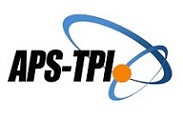Multimedia Simulasi Getaran untuk Meningkatkan Hasil Belajar Siswa
Abstract
Abstrak: Pemerintah terus melakukan perbaikan kualitas Pendidikan, salah satunya dengan adanya kurikulum 2013 yang berfokus pada pembelajaran mandiri dan pembelajaran yang berpusat pada pebelajar. Pebelajar tak hanya harus menguasai konsep Fisika secara teoritis, dalam pembelajaran Fisika pebelajar perlu sanggup menggunakan metode ilmiah untuk membuktikan teori-teori tersebut. Simulasi dapat meningkatkan motivasi karena pebelajar akan lebih termotivasi ketika mereka aktif berpartisipasi dalam sebuah situasi daripada hanya mengobservasi secara pasif. Tujuan dari penelitian ini adalah mengembangkan produk multimedia simulasi yang valid dan efektif untuk meningkatkan motivasi belajar. Model penelitian pengembangan yang dipakai adalah model Lee dan Owens. Tahap validasi oleh ahli materi menghasilkan rata-rata jawaban dengan presentase 95,14%, produk multimedia valid. Sedangkan hasil dari validasi ahli media yaitu rata-rata jawaban dengan presentase 98,86% . Hasil dari pretest memperoleh rata-rata nilai 55,94, sedangkan dalam hasil posttest mendapatkan rata-rata nilai 78,91 dengan N-gain sebesar 0,52. Rata-rata hasil angket pebelajar terkait penggunaan produk multimedia adalah 3,36 dari 4,0 yang diharapkan dengan presentase 84%.
Abstract: The Government continues to improve the quality of education, one of which has a 2013 curriculum that focuses on independent learning and learning-centered study. Learning not only has to master the concept of physics Theoretically, in the learning of Physics , Learning needs to be able to use scientific methods to prove these theories. Simulations can increase motivation because learning will be more motivated when they are actively participating in a situation rather than simply observing passively. The purpose of this research is to develop a valid and effective simulated multimedia product to improve learning motivation. The method used in this study was a method of research and development with the research models Lee and Owens. The validation phase by material experts resulted in an average answers with a 95.14% percentage, a valid multimedia product. While the result of the media expert validation is the average answer with a percentage of 98.86%. Results of pretests gained an average of 55.94 values, whereas in posttest results received an average of 78.91 values with N-gain of 0.52. The average results of the poll related to the use of multimedia products is 3.36 from 4.0 which is expected with a percentage of 84%.
Keywords
Full Text:
PDFReferences
Alessi, S. M., & Trollip, S. R. (1991). Computer based Instruction: Method & development. Englewood Cliffs: NJ: Prentice Hall.
Alessi, S. M., & Trollip, S. R. (2001). Multimedia for Learning: Methods and Development (3rd ed.). Massachusetts: A Pearson Education.
Ambarwati, D., & Suyatna, A. (2018). Interactive design for self-study and developing students' critical thinking skills in electromagnetic radiation topic. Journal of Physics: Conference Series, 1-8.
Anas, M. A., Soepriyanto, Y., & Susilaningsih. (2019). Pengembangan Multimedia Tutorial Topologi Jaringan untuk SMK Kelas X Teknik komputer dan Jaringan. JKTP Jurnal Kajian Teknologi Pendidikan, 1(4), 307-314.
Ariani, N., & Haryanto, D. (2010). Pembelajaran MUltimedia di Sekolah. Jakarta: PT. Prestasi Pustakarya.
Brotosiswoyo, B. S. (2000). Kiat Pembelajaran MIPA dan Kiat Pembelajaran Fisika di Perguruan TInggi. Jakarta: Departemen Pendidikan Nasional.
Clark, R. E., & Voogel, A. (1985). Transfer of training principles for instructional design. Educational Communication and Technology Journal, 33(2), 113-123.
Darmawan. (2013). teknologi Pendidikan. Bandung: PT Remaja Rosdakarya.
Frey, B. A., & Sutton, J. M. (2010). A Model for Developing Multimedia Learning Projects. MERLOT Journal of Online Learning and Teaching, 6(2), 491-507.
Lee, W. W., & Owens, D. L. (2004). Multimedia-based instructional design: computer-based training,. San Fransisco: Pfeiffer.
Lee, W., & Roadman, K. (1991). Linking Needs Assessment to Performance Based Evaluation. Performance & Instruction, 4-6.
Lieu, D. K. (1999). Using interactive multimedia computer tutorials for engineering Graphics education. Journal for Geometry and Graphics Volume. 3., 85-91. Retrieved from https://www.researchgate.net/publication/228710558_Using_interactive_multimedia_computer_tutorials_for_engineering_Graphics_education
Malone, T. W., & Lepper, M. R. (1987). Making learning fun: A taxonomy of intrinsic motivation learning. Hillsdale : NJ: Lawrence Erlbaum.
Mayer, R. E. (2009). Multimedia Learning. Santa Barbara: University of California.
Mayer, R. E. (2009). Multimedia Learning: prinsip-prinsip dan aplikasi. Yogyakarta: Pustaka Pelajar.
Mayer, R. E., & Alexender, P. A. (2011). Handbook of Research on Learning and Instruction. New York: Routledge.
Mc Dermott, P., & Gormley, K. A. (2016). Teachers’ Use of Technology in Elementary Reading Lessons. Reading Psychology, 37(1), 121-146.
Meitantiwi E. Y. , Masykuri M., Nurhayati N.D. (2015). Pengembangan Multimedia Pembelajaran Tutorial. Jurnal Pendidikan Kimia (JPK), 59-67. Retrieved from http://jurnal.fkip.uns.ac.id/index.php/kimia/article/view/5111
Najib, M. A., Setyosari, P., & Soepriyanto, Y. (2018). Multimedia Interaktif untuk Belajar Penjumlahan dan Pengurangan Pecahan. JKTP Jurnal Kajian Teknologi Pendidikan, 1(1), 29-33.
Nurullah, A., Soepriyanto, Y., Sulton, & Husna, A. (2019). Pengembangan Multimedia Pembelajaran Energi dalam Sistem Kehidupan. JKTP Jurnal Kajian Teknologi Pendidikan, 2(4), 315-319.
Paivio, A. (2006). Dual Coding Theory and Education. Michigan: The University of Michigan School.
Phing, B. S., & Kian, T. (2017). Interactive Multimedia Learning: Students' Attitudes and Learning Impact in Animation Course. The Turkish Online Journal of Educational Technology, 6(3), 1-10.
Purnomo, H. (2011). Laboratorium Virtuil sebagai Alternatif Kegiatan Laboratorium Konvensionaldi Perguruan Tinggi. Orbith, 418-421.
Racicot, R. (2016). The effect of multimedia writing support software on written productivity. Journal of Occupational Therapy, Schools, and Early Intervention, 9(1), 99-123.
Rahman, S. A., Ghazali, M., & Ismail, Z. (2003). Integrating ICT in Mathematics Teaching Methods Course: How Has ICT Changed Student Teachers' Perception About Problem Solving. The Mathematics Education into 21th Century Project Proceedings of The International Conference The Decidable and the Undecidable in Mathematics Education. Czech Republic.
Reigeluth, C. M., & Schwartz, E. (1989). An Intructional Theory for The Design of Computer-Based Simulations. Journal of Computer-Based Instruction, 16, 1-10.
Rofiq, S. A., & Kuswandi, D. (2019). Pengembangan Multimedia Pembelajaran Menulis Deskriptif Kelas VII. JINOTEP Jurnal Inovasi Teknologi Pendidikan, 5(2), 87-92.
Sihkabuden. (2011). Media Pembelajaran. Malang: Departemen Pendidikan Nasional Universitas Negeri Malang Fakultas Ilmu Pendidikan.
Theasy, Y., & Wiyanto, S. (2017). Identifikasi Kesulitan Belajar Fisika Berdasarkan Kemampuan Multirepresentasi. Physics Communication, 1(2), 1-5.
Vrtačnik M. , Sajovec M. , Dolničar D. , Pučko R C. , Glazar A. & Brouwer , N. Zupančič. (2000). An Interactive Multimedia Tutorial Teaching Unit and its Effects on Student Perception and Understanding of Chemical Concepts. Westminster Studies in Education, 91. doi:10.1080/0140672000230109
Wenning, C. J. (2012). The Level of Inquiry Model of Science Teaching. Journal of Physics Teacher Education , 16-23.
Wijaya, A. R., Kuswandi, D., & Susilaningsih. (2018). Pengembangan Multimedia Interaktif dengan Topik Kolonialisme dan Imperialisme di Indonesia pada Mata Pelajaran IPS Kelas VII. JINOTEP Jurnal Inovasi Teknologi Pendidikan, 5(1), 38-42.
Wulandari, R., Susilo, H., & Kuswandi, D. (2017). Penggunaan Multimedia Interaktif Bermuatan Game Edukasi untuk Siswa Sekolah Dasar. Pendidikan, 2(8), 1024-1029.
DOI: http://dx.doi.org/10.17977/um038v3i12019p040
Refbacks
- There are currently no refbacks.
Copyright (c) 2020 Ahmad Nur Yasin

This work is licensed under a Creative Commons Attribution-ShareAlike 4.0 International License.
JKTP: Jurnal Kajian Teknologi Pendidikan published by Department of Educational Technology, Faculty of Education, State University of Malang in Collaboration with Asosiasi Program Studi Teknologi Pendidikan Indonesia (APS TPI).
Publisher Address:
Lab. Teknologi Pendidikan, Gd.E2, Lt.1
Fakultas Ilmu Pendidikan Universitas Negeri Malang
Jl. Semarang 5, Kota Malang Email: jktp.fip@um.ac.id
========================================================================================================
| INDEXED BY | TOOLS | PLAGIARISM CHECK | ARTICLE TEMPLATE |
|
|

JKTP: Jurnal Kajian Teknologi Pendidikan is licensed under a Creative Commons Attribution-ShareAlike 4.0 International License.
JKTP Statistics (Since July 13th, 2020)






.png)












